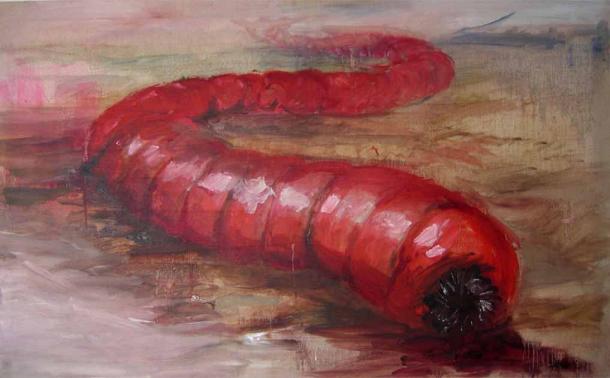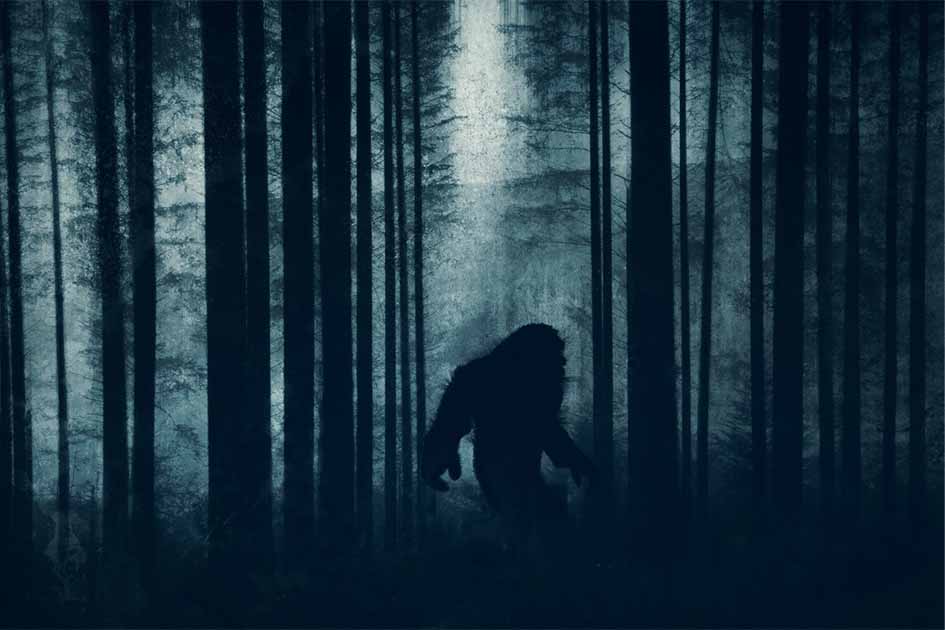
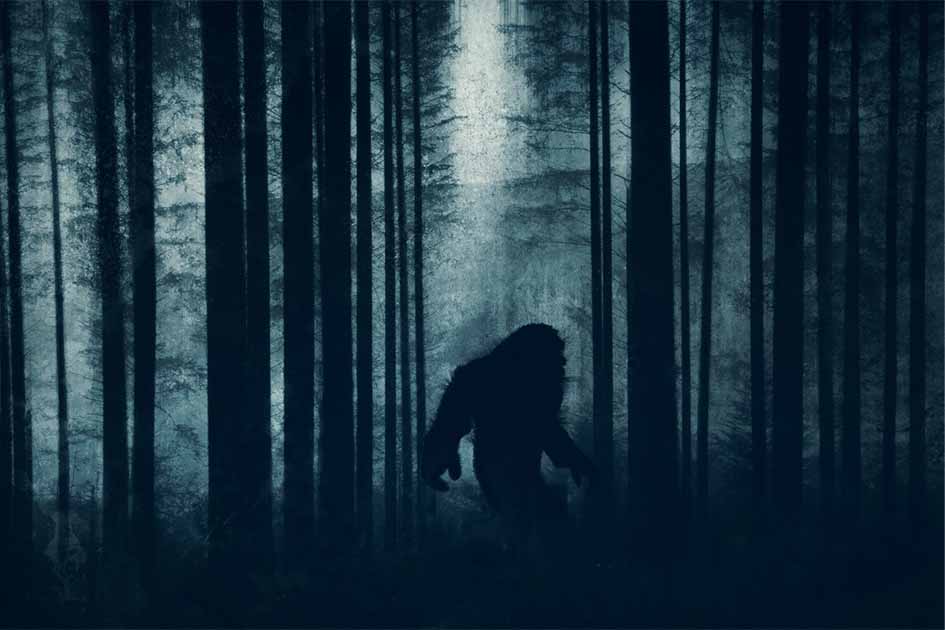
A cryptid is a type of animal that some people believe to be real, despite the fact that its existence is disputed or “unproven”. Sometimes these are animals that science believes to be extinct, but people still believe are alive. Other times they are creatures of legend that science is sure never existed, but people still cling to the hope of finding them. Science tends to write off most cryptids pretty quickly, and those who study them, cryptozoologists, often face derision. But the truth is, several high-profile cryptids, like the Giant Squid and Mountain Gorilla, have been proven to exist over the years. Here are some of the most famous cryptids we’re still hunting for.
1. Bigfoot: The Most Famous Cryptid?
One of the most famous, and most often “sighted” cryptids in the world has to be Bigfoot. Bigfoot, also known as the Sasquatch, is supposedly an ape-like creature native to the forests of North America. It is said Bigfoot weighs more than 500 pounds (227 kilograms) and has been reported as being anywhere from seven to ten feet (2 to 3 meters) tall!
The modern obsession with finding Bigfoot started in 1958, when a bulldozer operator named Jerry Crew discovered a set of large human-like tracks in Humboldt County, California. When he told his coworkers about his discovery, they shared similar experiences and soon the whole crew was referring to the creature as Bigfoot. The press got hold of the story, and the rest is history.
The story of Bigfoot actually goes back much, much further, however. The folklore of many of North America’s indigenous tribes features stories of large hair-covered humanoid creatures that hide in the forest. Going back as far as 1,000 years ago, a tribe known as the Yokuts in central California was drawing images of what people today believe to be a family of Bigfoots.

A reproduction of the Yokut petroglyphs at Painted Rock, seemingly depicting a cryptid Bigfoot family. (Public Domain)
In the 16th and 17th centuries, colonists from Europe who settled in California reported seeing “Los Vigilantes” or “Dark Watchers” in the forests, stalking them. While this might all sound promising, it is important to note that there are serious differences between these supposedly corroborating historical stories. The “Bigfoots” of different tribes varied greatly. Some were described as merely passive watchers, while others were monsters and demons that were said to steal away unlucky tribespeople in their sleep.
Every year, people claim to have seen Bigfoot and several dubious photos of the creature have been taken over the years. In 2002, the family of Ray Wallace, a member of the 1958 crew, revealed that their father had played a prank on his crew by using carved wooden feet to leave the tracks.
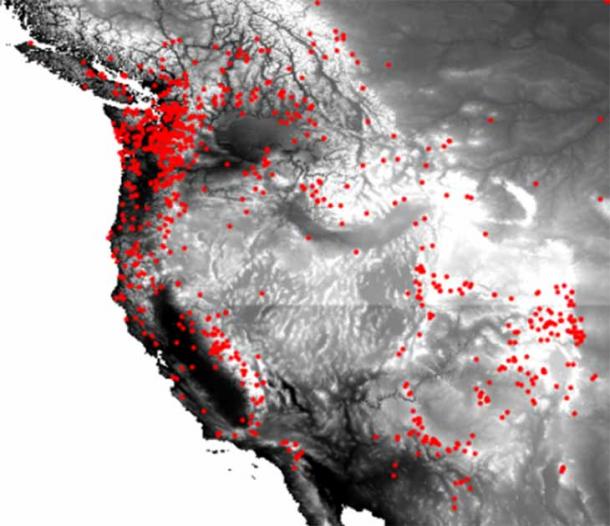
Every year, there are hundreds of reported Bigfoot or Sasquatch cryptid sightings in the western United States. Can all these people be mistaken? (Edwin Duesiester / CC BY SA 4.0)
2. The Loch Ness Monster: Scotland’s Favorite Monster
Another competitor for the most famous cryptid has to be the Loch Ness Monster of Loch Ness in Scotland. Much like Bigfoot, the story of the Loch Ness Monster is much older than most people realize.
The Loch Ness Monster is usually described as being a large, long-necked creature with one or more humps on its back that stick out of the water. Since sightings and photographs are, let us say, spotty at best, further description is difficult. The monster affectionately referred to as Nessie is most often depicted as being similar in appearance to a dinosaur.
The legend of the Loch Ness Monster dates back to the 6th century AD. The Life of Saint Columba, written by the Scottish Abbot Abdomnan features the first recorded report of a monster at Loch Ness. The book tells how an Irish monk, Saint Columba, was visiting the area with some companions when they came across some locals burying a man next to the River Ness.
The locals explained how the man had been swimming when he was attacked by a strange water beast. They had tried to save him but to no avail. Saint Columba did the only sensible thing he could and told one of his followers, Luigne moccu Min, to swim across the river. When his friend was attacked by the beast, Columba made a sign of the cross and drove the monster away.
More modern reports of a monster in the lake started in the late 19th century, when a Mr. D. Mackenzie reported seeing a log or upturned boat “wriggling and churning up the water”. As he watched it wriggle, the shape began to propel itself across the surface. Several years later in 1888, Alexander Macdonald reported seeing a “large stubby-legged” monster swimming close to the loch’s shore.
These sightings inspired the Loch’s water bailiff, Alex Campbell, to write an article about the monster in 1933 that was published in the Inverness Courier. In the following years, sightings came in thick and fast, with the first alleged photograph of the monster being taken in 1934. These sightings sparked the modern obsession with finding Nessie.
That photograph in particular served as evidence for 60 years, until it was finally completely debunked in 1994 and labeled an elaborate hoax. Essentially nothing about the photograph made sense. This hasn’t stopped people from believing, however. Every year, tourists flock to Loch Ness hoping to make a name for themselves by snapping a photo of the monster.
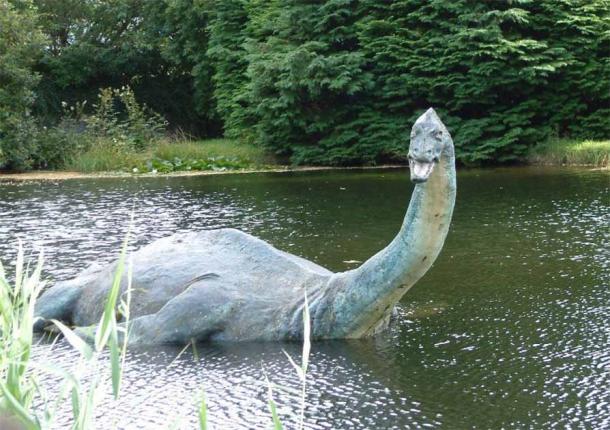
While the Loch Ness Monster may remain a cryptid, it has led to a related tourism surge in the area. Sculpture of a Loch Ness Monster from the Museum of Nessie, Scotland (StaraBlazkova / CC BY SA 3.0)
3. Chupacabra: Inspired by a Horror Movie?
The chupacabra isn’t quite as famous as our first two entries, but it’s getting there. This relative newbie to the list of cryptids was first sighted in 1995 and has since exploded in pop culture. But what is it?
Well, descriptions vary widely. Sometimes the chupacabra is described as being reptilian or alien-like. It is usually a relatively large creature, around the size of a very large dog or small bear. Reports often state it has a row of spines along its back to the tail. In the southwestern United States, it is more typically claimed to be similar to a dog in form.
The creature’s name, which translates as ‘goat sucker’, comes from the fact that it is supposedly vampiric in nature. The chupacabra is said to attack and then drink the blood of livestock, such as cows and goats. Attempts have been made to tie the creature to the folklore of various indigenous peoples, but they have been unconvincing at best. Instead, all evidence points to the creature being a modern invention.
The chupacabra seems to be a case of a modern monster story going wild. The monster was first “spotted” in 1995, when Madelyne Tolentino reported seeing the monster in the Puerto Rican town of Carovanas. The area had seen a spate of animal killings, with eight sheep having been found dead, with puncture marks in their abdomens and having been completely drained of blood several months earlier.
Soon after Tolentino’s report hit the press, chupacabras were being spotted not just all over the United States, but all over South America and even as far afield as India. Wherever there was an unexplained animal death, there was a report of a chupacabra.
These animal deaths around Carovanas were then tied to animal killings in Puerto Rico dating back to 1975, which had originally been attributed to Satanists, another wild conspiracy theory. The world caught chupacabra fever, and the mayor of Carovanas went as far as organizing an armed posse of 200 people to hunt the creature down.
Quite a few chupacabras have been shot and killed over the years. These have universally turned out to be wild dogs or coyotes with a bad case of mange. It also turns out that Ms. Tolentino’s description of the chupacabra is an exact match to the creature from the horror movie Species, a film she had seen just before the sighting. In fact, Tolentino admitted genuinely believing that the events of the film were happening in her small town. This makes her reliability as a witness somewhat questionable.

A depiction of a chupacabra cryptid from the Bestiary Museum, St. Petersburg, Russia (Maria / Adobe Stock)
4. Mothman: A Modern Angel of Death?
Much like the chupacabra, the Mothman is a more modern addition to the list of cryptids. It is also similar in that it, too, appears to be a cryptid and modern monster story rolled into one.
Most cryptids tend to resemble existing creatures in some way, which adds to their believability. Maybe Nessie is a family of dinosaurs that has somehow survived. Maybe Bigfoot is a super rare example of Great Apes that are native to North America, and so on. The Mothman, however, bucks this trend. It is said to be a large, man-sized creature with the wings of a moth and glowing red eyes.
Sightings of the creature date back to 1966 and 1967 in the towns of Charleston and Point Pleasant, West Virginia. On November 15th, 1966, a young couple from Point Pleasant told police they had seen a large white, winged creature with red eyes blocking the road. They claimed when they fled in their car, the creature chased them right up to the city limits.
Over the next few days, other citizens reported seeing the same creature, which the local sheriff put down to be a particularly large and aggressive heron that he referred to as “shitepoke”. In 1967, a bridge in the area, Silver Bridge, collapsed, killing 46 people. Locals reported seeing the Mothman in the lead-up to and just after the collapse. Some connected it to or blamed it for the disaster.
Thanks to the series of books The Mothman Chronicles, as well as its popular film adaptation, the Mothman has stayed represented in modern pop culture. Every year, Point Pleasant hosts the Mothman Festival, and the creature has become somewhat of a local celebrity. It even got its own statue!
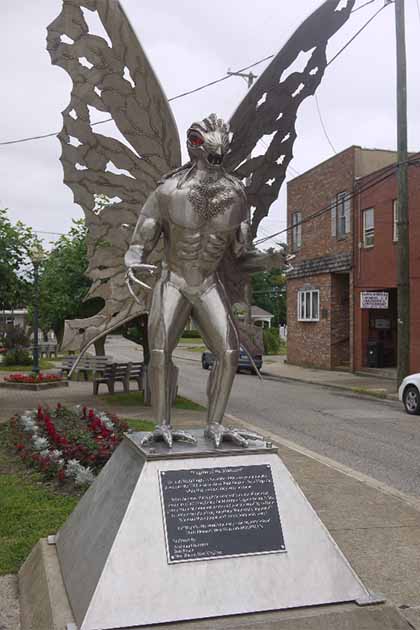
The Mothman statue on 4th Street in Point Pleasant is a minor tourist attraction. (Erica Minton / CC BY NC 2.0)
5. Mongolian Death Worm: A Terror beneath the Sands
Unlike our earlier entries on this list, the fame of our next cryptid is a little more localized. The Mongolian Death Worm is infamous, if you hail from in or around the Gobi Desert.
The Mongolian Death Worm is said to be a giant, reddish worm anywhere from 2 to 5 feet long. Locals refer to it as the Allghoi khorkoi (intestine worm), due to the fact it apparently resembles cow intestines.
The worm is famous among the area’s nomadic tribes. They believe the worm travels beneath the sands and surfaces to attack their livestock. It does this by spitting a kind of venom or acid at them.
If that isn’t terrifying enough, it is also said that the worm can emit an electric charge and/or psychic blasts. Some believe it can kill a man just by looking at him, and several human deaths have been attributed to the worm. Some scholars believe the worm was used historically to explain deaths caused by heat stroke in the desert.
In the early nineties, an expedition was organized to try and find evidence of the worm. Thankfully, all they found were stories and superstitions with no hard evidence.
An interpretation of the cryptid Mongolian death worm by Belgian painter Pieter Dirkx. (Pieter Dirx / CC BY SA 1.0)
6. The Jersey Devil: A Monster and a Mascot
The Jersey Devil feels somewhat like a precursor to the Mothman: a horror story that became a cryptid and then became a local celebrity. While today the Jersey Devil is most commonly associated with the New Jersey hockey team, its actual history goes back to the 1700s.
The legend of the Jersey Devil first became widespread in the 18th century. Locals believed it was the child of a local witch known as “Mother Leeds” and the devil himself. The creature was said to be an animal hybrid. It had the head and hooves of a horse but with a long neck and the wings of a bat. Its eyes glowed a bright red, and the creature would let out a terrible high-pitched screech when spotted.
People believed the devil hunted local livestock and poisoned local creeks and streams. Over the years, there have been various sightings, but the most famous was made in 1909 when thousands of people in the region reported seeing it around the same time. In the 1960s, a $10,000 bounty was put out on the creature but no one has claimed it. Yet.
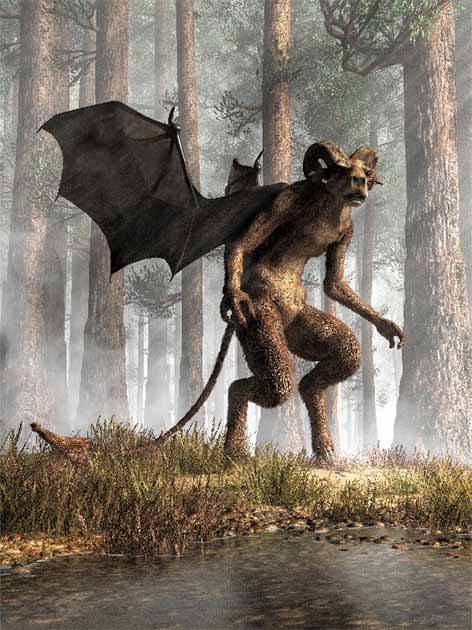
The Jersey Devil is another cryptid turned celebrity. If it ever turns up, there will be a line for miles to take pictures with it! (Daniel Eskridge / Adobe Stock)
7. The Yeti: The Abominable Snowman of the Himalayas
No list of famous cryptids can be complete without mentioning the Yeti, or Abominable Snowman. The Yeti is remarkably similar to the Sasquatch in appearance. It is said to be a large, ape-like biped that lives in the Himalayas of Nepal and Tibet.
While the Yeti first became world famous during the 20th century, its history is much older. Central Asian folklore has been describing creatures that resemble the Yeti for hundreds of years. This folklore, as well as most alleged eyewitnesses describe the Yeti as actually having dark-colored fur, but for some reason, pop culture has made the Yeti white.
Modern sightings began in the 1800s, when westerners first began climbing the Himalayas. Many of these climbers reported finding large primate footprints in the snow, much too large to be human. Throughout the 1800s and the 1900s, these sightings continued, with some mountaineers claiming to have been stalked by the Yeti.
As the Yeti grew in popularity, it led to several high-profile hoaxes, such as the famous faked film produced by a Fox television show. But not everyone is convinced the Yeti is a hoax. Every year people claim to spot the beast. Even the United States government has gotten involved, releasing a document outlining official regulations for the hunting of Yetis.
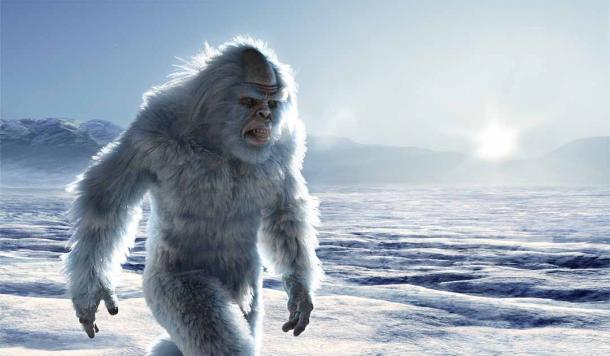
The Yeti or Abominable Snowman has been reported since the 1700s, yet no solid evidence of this cryptid has been found. (Alien Cat / Adobe Stock)
Conclusion
It is easy to scoff at the cryptids on this list. They all seem too outlandish to be true. Most cryptids that have been proven weren’t that surprising in hindsight. Gorillas that live in the mountains? Not very terrifying or shocking.
In all likelihood, none of the entries on this list will ever be proven to exist. But who knows? Scientists have scoffed and been proven wrong before. Perhaps if enough people spot them, we’ll have to take them a little more seriously.
